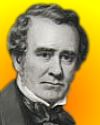
On 2 Jun 1891, John Hawkshaw died, an English civil engineer noted for his work on the Charing Cross and Cannon Street railways among many other projects.
Read this Obituary for John Hawkshaw in the Engineering News (1891), to find out about the many types of projects in which he was involved in his lifetime. The article outlines how he is a fine example of a highly productive Victorian engineer.

On 2 Jun 1903, Robert Morris Page was born, the American physicist who invented the technology for pulse radar. Today's book pick is: Origin of Radar: An Epic of Modern Technology, by Robert Morris Page, who tells the full story of the discovery and development of radar, the most valuable weapon of World War II. He starts with the accidental discovery of radar when in 1922 A.H. Taylor and L.C. Young noticed that ships on the Anacosta River interrupted radio transmission and follows the development of pulse radar to its present applications in navigation, weather forecasting, astronomy and other technical fields. Woven into the story is a clear explanation of radar equipment and the physical principles involved.
It is available from Amazon, typically about Used from $3.99. (As of earlier time of writing - subject to change.)
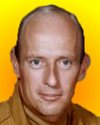 | Whoopie! Man, that may have been a small one for Neil but that’s a long one for me. (Commenting as the third man to step on the lunar surface, though of smaller stature, 5' 6", than Neil Armstrong.) |
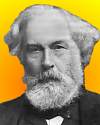 | We profess to teach the principles and practice of medicine, or, in other words, the science and art of medicine. Science is knowledge reduced to principles; art is knowledge reduced to practice. The knowing and doing, however, are distinct. ... Your knowledge, therefore, is useless unless you cultivate the art of healing. Unfortunately, the scientific man very often has the least amount of art, and he is totally unsuccessful in practice; and, on the other hand, there may be much art based on an infinitesimal amount of knowledge, and yet it is sufficient to make its cultivator eminent. |
| Before you look at today's web page, see if you can answer some of these questions about the events that happened on this day. Some of the names are very familiar. Others will likely stump you. Tickle your curiosity with these questions, then check your answers on today's web page. | |
| Births | |
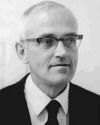 | Clair Cameron Patterson, born 2 June 1922, was a U.S. geochemist who in 1953 made the first precise measurement of the Earth's age, 4.55 billion years. He pioneered in various areas of geochemical research. One major accomplishment was providing the first reliable age of terrestrial and meteoritic materials. His results came from analysis of the isotopic compositions and concentrations of a certain element in the rock samples. What was the particular element? |
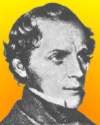 | Nils Gabriel Sefström, born 2 June 1787, was a Swedish chemist who discovered a new element. He examined iron ore after a mine manager had pointed out an interesting test. He was told, if a batch of was treated with hydrochloric acid and a black powder appeared, then the iron would be brittle. By further study he found this was not always true, for sometimes a black powder appeared from iron that was not brittle (1831). By analysis of the powder, although similar to chromium or uranium, he determined it was a new element. Sefström named it after a Norse goddess. Can you name this element? Deaths |
| Deaths | |
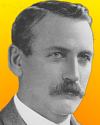 | John Frank Stevens (1853-1943) was an American civil engineer and railroad executive who, as chief engineer of one of the nation’s biggest ever construction projects. Working 1905 to 1907, he laid the basis for that project’s successful completion. The fundamental problem that he faced was one of restoring confidence and morale. A yellow fever epidemic, followed by the unexpected resignation of the first Chief Engineer, John F. Wallace, had made left project in a state of chaos. He found no order, no plan on the job. He planned the main features, turned the project around, and left it destined for successful completion. What project did he rescue from chaos? |
| Events | |
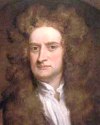 | On 2 Jun 1686, the publication of one of the great books in science was arranged in London at the Royal Society. The minutes of the meeting record that to publish this work of a famous scientist, the astronomer Edmund Halley would “undertake the business of looking after it and printing it at his own charge.” What book by what scientist was to be published? |
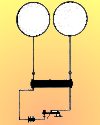 | On 2 June of a certain year, the first radio patent was issued to Guglielmo Marconi in England for his wireless telegraphy apparatus for “Improvements in Transmitting Electrical Impulses and Signals, and in Apparatus Therefor.” In what decade was it issued? |
 | On 2 Jun 1875, Alexander Bell and his assistant had been working on the “harmonic telegraph.” In the transmitter room, his assistant had been trying to free a reed that had been too tightly wound to the pole of its electromagnet, when it produced a twang. Bell, who had been working in the receiving room heard the twang. He realized that now his dream of speech transmission must be a possibility, for the complex overtones and timbre of the twang were of the nature of speech also. Can you name this assistant? |
Fast answers for the previous newsletter for June 1: jet aircraft engine • an engine driven by steam provided by a boiler burning gasoline or kerosene • hovercraft • heart • 3 kelvin (3 K) • Thomas Edison • Antoine Lavoisier.
 If you enjoy this newsletter, the website, or wish to offer encouragement or ideas, please send feedback by using your mail reader Reply button.
If you enjoy this newsletter, the website, or wish to offer encouragement or ideas, please send feedback by using your mail reader Reply button. Your click on a Facebook, StumbleUpon, or other social button on the site webpages is also a welcome sign of appreciation. Thank you for using them.
© This newsletter is copyright 2020 by todayinsci.com. Please respect the Webmaster's wishes and do not put copies online of the Newsletter — or any Today in Science History webpage. (If you already have done so, please remove them. Thank you.) Offline use in education is encouraged such as a printout on a bulletin board, or projected for classroom viewing. Online, descriptive links to our pages are welcomed, as these will provide a reader with the most recent revisions, additions and/or corrections of a webpage. For any other copyright questions, please contact the Webmaster by using your mail reader Reply button.
--
If you do not want to receive any more newsletters, Unsubscribe
To update your preferences and to unsubscribe visit this link
Executive Real Estate Business Class
-
"It was like a man with wings. It wasn't like anything you'd see on TV or in a monster movie." ...
About the publisher
Search This Blog
Blog Archive
-
▼
2020
(1542)
-
▼
June
(193)
- TRAVEL: Epic America—Our photographers' picks
- On This Day for June 30 - Night of the Long Knives...
- Newsletter for Tuesday 30 June.
- We told you: Mass-Tracking COVI-PASS Immunity Pass...
- June 30: Theory of Evolution, the Night of Long Kn...
- HISTORY: And the symbols come tumbling down
- Explore the Ocean with Nat Geo Kids Magazine
- New This Week on History News Network
- On This Day for June 29 - London's Globe Theatre d...
- Newsletter for Monday 29 June.
- COVID Cartoon Night (not funny) while we weep for ...
- June 29: Shakespeare's Globe Theatre Burns Down an...
- FAMILY: Getting your kid to help others
- Henry VIII's surprising burial place | The world's...
- On This Day for June 28 - Assassination of Archduk...
- Say the wrong thing: lose visitation with your kid...
- Newsletter for Sunday 28 June.
- June 28: Franz Ferdinand Assassinated, the Treaty ...
- The Compass: Kenya
- How the Invention of A/C Changed US Politics
- On This Day for June 27 - Yen made official moneta...
- Newsletter for Saturday 27 June.
- June 27: 1st Women's Magazine, Nuclear Power Stati...
- CORONAVIRUS SPECIAL EDITION: The virus hasn't won ...
- PHOTOGRAPHY: A legendary photographer's enduring r...
- Partner: How to keep your kids learning vocab this...
- Archaeologists Say They've Just Solved The 400-Yea...
- The Roundup Top Ten From History News Network
- On This Day for June 26 - Opening of CN Tower, Bab...
- Newsletter for Friday 26 June.
- Contact Tracer warns of forced vaccinations plus R...
- June 26: Reconnaissance balloons, Kennedy's Clario...
- YOUR WEEKLY ESCAPE: A dangerous quest for hallucin...
- That Was No Bunny: Watch New Episode of Alone Tonight
- ANIMALS: Leave that elephant alone
- On This Day for June 25 - Korean War begun, Antoni...
- Newsletter for Thursday 25 June.
- June 25: 1st Female PhD, Custer's Last Stand, the ...
- SCIENCE: The heat wave in the Arctic
- Demystified: What Does "SPF" Mean?
- On This Day for June 24 - Russia invaded by Napole...
- Breaking News from History News Network
- Newsletter for Wednesday 24 June.
- June 24: Fatal Medieval Dance Manias, the Gadsden ...
- TRAVEL: Fear of flying and hotel rooms fuels RV boom
- Be at the Front Lines of History's Most Epic Battl...
- On This Day for June 23 - Battle of Bannockburn, C...
- Lowest US coronavirus deaths reported since March ...
- Newsletter for Tuesday 23 June.
- June 23: World's Oldest Parliament, the Contracept...
- Life Under The Shah: What Iran Looked Like Before ...
- HISTORY: A swift goodbye to some racist imagery (a...
- A whole year of Britannica Premium for $49.99?
- New This Week on History News Network
- On This Day for June 22 - Mutiny against Henry Hud...
- Newsletter for Monday 22 June.
- Clintons and Gates Connected at the Hip plus Cardi...
- June 22: Galileo Galilei Recants, Last Shot of the...
- FAMILY: How to keep kids safe as places reopen
- On This Day for June 21 - Japanese defenses destro...
- Newsletter for Sunday 21 June.
- June 21: 1st Governor General of India, Fermat's L...
- The Compass: Ecuador
- On This Day for June 20 - Casket Letters found, Ho...
- Newsletter for Saturday 20 June.
- CORONAVIRUS SPECIAL EDITION: Could public bathroom...
- Mandatory Vaccines coming: Bill Gates Accuses Tho...
- June 20: Attila the Hun, the University of Oxford ...
- PHOTOGRAPHY: Fatherhood 2020 — ‘Fear and courage a...
- Why is America haunted by its past?
- The Woman Who Claimed Emmett Till Wolf-Whistled At...
- This Week's Roundup Top Ten from History News Network
- Exclusive HistoryExtra podcasts | Listen now
- On This Day for June 19 - Rosenbergs executed for ...
- Newsletter for Friday 19 June.
- World Economic Forum starts The Great Reset initia...
- YOUR WEEKLY ESCAPE: How the ultimate shark photo w...
- June 19: London's Metropolitan Police and the 1st ...
- Predator Encounters. Watch New Episode of Alone To...
- ANIMALS: Finding the snow leopards
- Count on a Source You Can Trust
- On This Day for June 18 - War of 1812 begun, Sir P...
- Newsletter for Thursday 18 June.
- Lockdowns, tracing, testing, vaccinating, and Libe...
- June 18: US-British War of 1812, the Battle of Wat...
- SCIENCE: They grew fearsome. They began soft, and ...
- Demystified: How Are Sports Chosen for the Olympics?
- Breaking News from History News Network
- On This Day for June 17 - Arrest of O.J. Simpson, ...
- Newsletter for Wednesday 17 June.
- June 17: Mumtaz Mahal, the French Revolution and G...
- TRAVEL: They hurtled the world's highest point
- Explore together with Nat Geo Kids magazine
- On This Day for June 16 - First woman in space, Jo...
- Newsletter for Tuesday 16 June.
- June 16: Salvation Army Forms, Bloomsday and FDR's...
- HISTORY: Why we can’t shake COVID-19
- New This Week on History News Network
- On This Day for June 15 - Magna Carta sealed by Ki...
- Yes, they really are forcing changes to your world...
-
▼
June
(193)
-
Blogroll
-
About
HistoryFact










0 comments:
Post a Comment